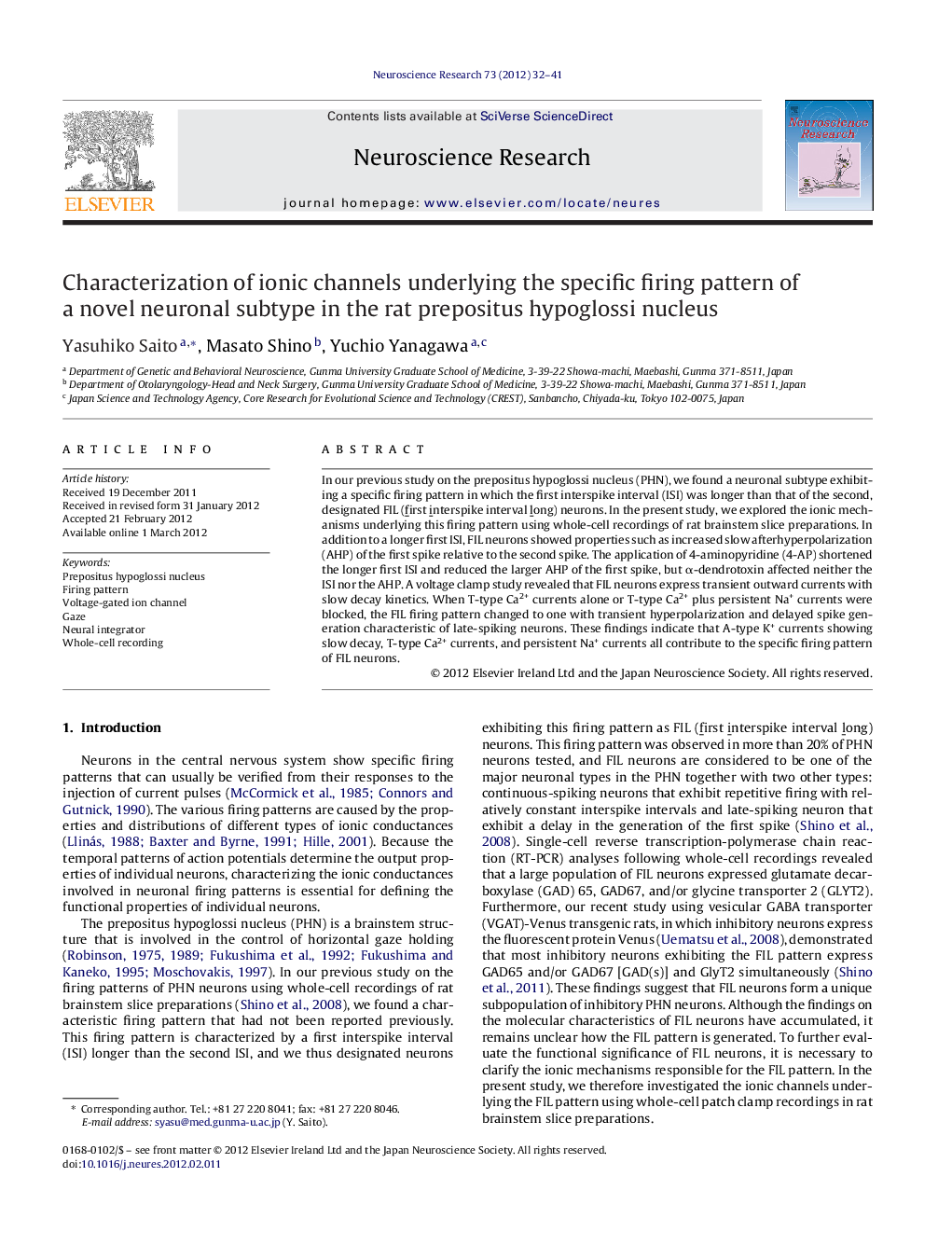| کد مقاله | کد نشریه | سال انتشار | مقاله انگلیسی | نسخه تمام متن |
|---|---|---|---|---|
| 4351507 | 1298058 | 2012 | 10 صفحه PDF | دانلود رایگان |

In our previous study on the prepositus hypoglossi nucleus (PHN), we found a neuronal subtype exhibiting a specific firing pattern in which the first interspike interval (ISI) was longer than that of the second, designated FIL (first interspike interval long) neurons. In the present study, we explored the ionic mechanisms underlying this firing pattern using whole-cell recordings of rat brainstem slice preparations. In addition to a longer first ISI, FIL neurons showed properties such as increased slow afterhyperpolarization (AHP) of the first spike relative to the second spike. The application of 4-aminopyridine (4-AP) shortened the longer first ISI and reduced the larger AHP of the first spike, but α-dendrotoxin affected neither the ISI nor the AHP. A voltage clamp study revealed that FIL neurons express transient outward currents with slow decay kinetics. When T-type Ca2+ currents alone or T-type Ca2+ plus persistent Na+ currents were blocked, the FIL firing pattern changed to one with transient hyperpolarization and delayed spike generation characteristic of late-spiking neurons. These findings indicate that A-type K+ currents showing slow decay, T-type Ca2+ currents, and persistent Na+ currents all contribute to the specific firing pattern of FIL neurons.
► We explored ionic channels underlying the FIL pattern of PHN neurons.
► 4-Aminopyridine shortened the first ISI and reduced a large AHP of the first spike.
► FIL neurons expressed transient outward currents with slow decay.
► The FIL pattern was changed to late spiking by Ni2+ and riluzole.
► A-type K+, T-type Ca2+, and persistent Na+ currents contribute to the FIL pattern.
Journal: Neuroscience Research - Volume 73, Issue 1, May 2012, Pages 32–41